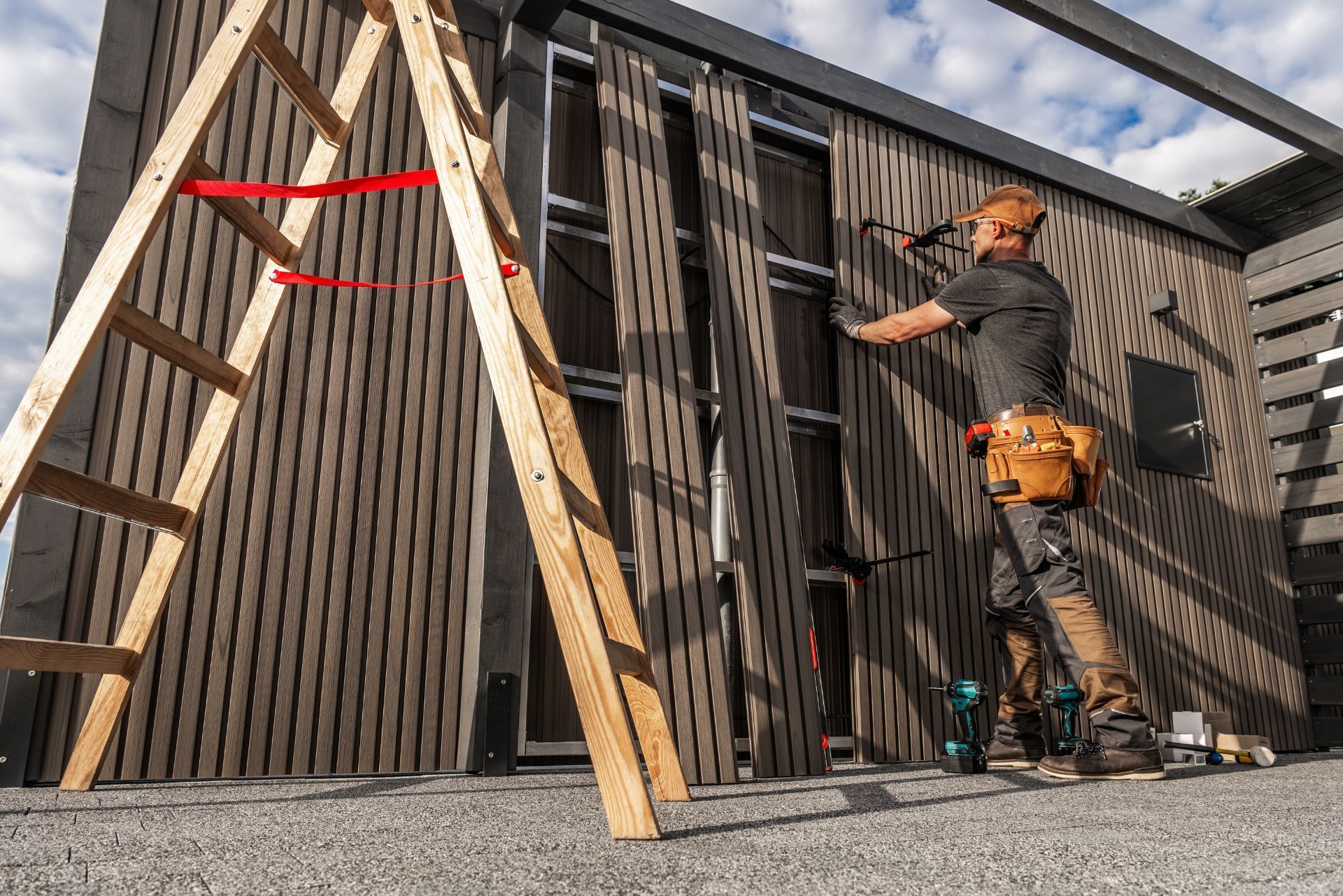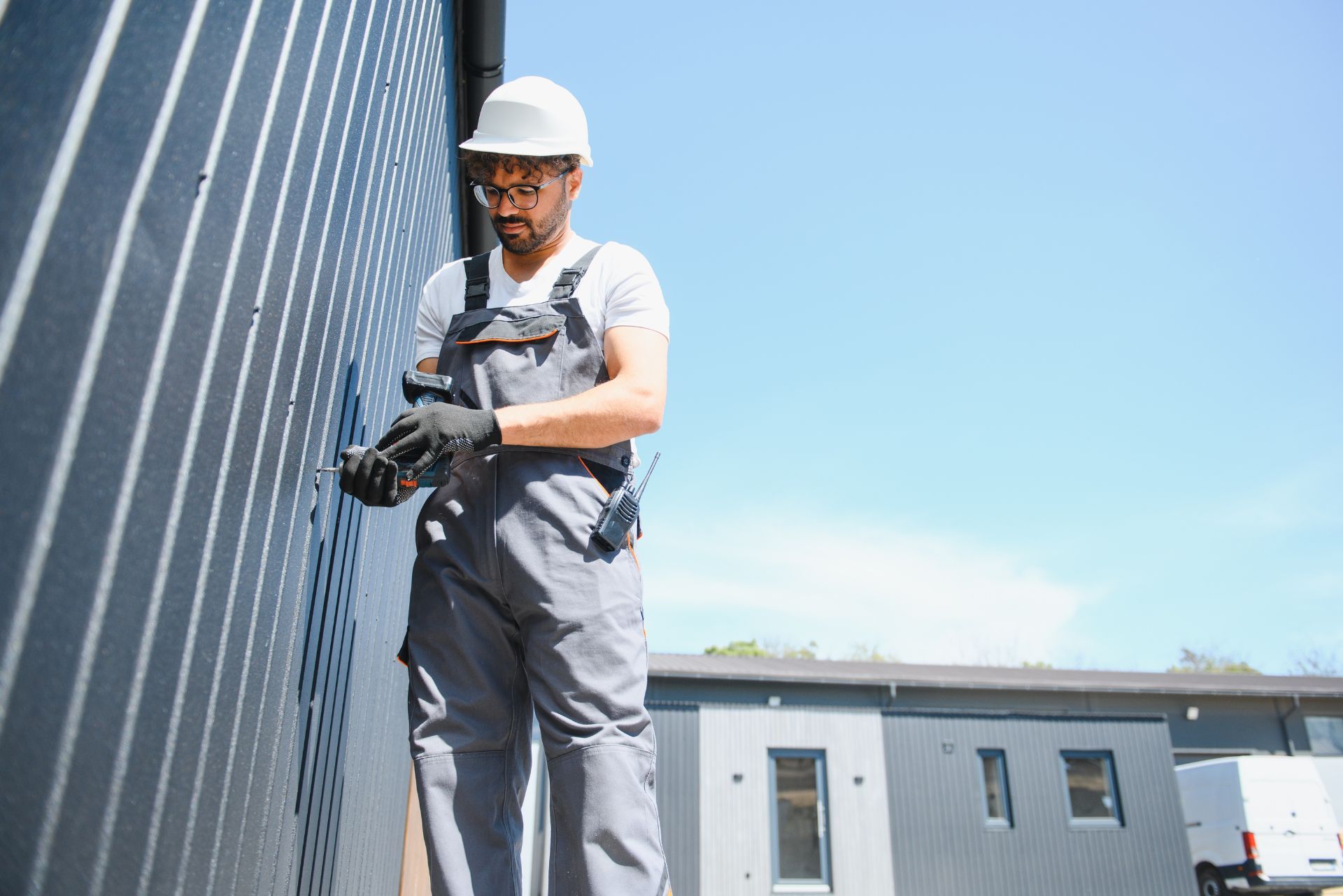Top 3 Recommended Policies
Index
Why Siding Installer Insurance is Essential in Texas
Types of Insurance Coverage Every Texas Siding Installer Should Consider
How Texas Weather and Market Trends Affect Insurance for Siding Installers
Impact of Natural Disasters on Construction and Labor Markets
Choosing the Right Insurance Provider and Policy
Contact Us
For siding installers in Texas, securing the right insurance coverage is not just a regulatory formality—it’s a crucial safeguard against the unique risks faced in this dynamic and often unpredictable market. With Texas homeowners paying some of the highest insurance premiums in the nation and the state experiencing frequent natural disasters, understanding the nuances of insurance for siding contractors is essential for protecting your business, your employees, and your clients.
In this comprehensive guide, we’ll explore the key aspects of Texas siding installer insurance, including why it’s necessary, what types of coverage you need, how recent industry trends affect premiums, and practical tips for navigating the insurance landscape effectively. Along the way, we’ll incorporate the latest data and expert insights to give you a clear picture of the challenges and opportunities in this sector.
Why Siding Installer Insurance is Essential in Texas
Texas presents a unique set of challenges for siding installers, largely due to its exposure to frequent and severe weather events. Between 2019 and 2023, the state experienced an average of 11 billion-dollar weather disasters annually, with 16 such events occurring in 2023 alone. These natural catastrophes, including hurricanes, floods, and hailstorms, pose significant risks to construction projects and the contractors involved.
Given this environment, insurance is not just a protective measure but a business imperative. Without adequate coverage, siding installers risk devastating financial losses from property damage, liability claims, or work-related injuries. Moreover, insurance helps build trust with clients who want assurance that their home improvement projects are in safe hands.
It’s worth noting that Texas homeowners paid an average of $2,374 for insurance premiums in 2024, reflecting a 10.8% increase from the previous year. This trend underscores the rising costs and complexities insurers face in the state, which inevitably impact contractors seeking coverage. For more details on these insurance premium trends, see the San Antonio Express-News report.
Additionally, the nature of the siding installation business itself adds another layer of risk. Installers often work at heights, which increases the likelihood of accidents and injuries. The Occupational Safety and Health Administration (OSHA) has strict regulations regarding fall protection, and non-compliance can lead to hefty fines and increased liability. This makes having comprehensive insurance coverage even more critical, as it can help cover medical expenses and legal fees that may arise from workplace incidents.
Furthermore, the competitive landscape in Texas means that siding installers must not only focus on providing quality workmanship but also on differentiating themselves from competitors. Having the right insurance can serve as a marketing tool, showcasing professionalism and reliability to potential clients. Many homeowners actively seek contractors who can provide proof of insurance, as it reflects a commitment to safety and accountability. This can ultimately lead to more business opportunities and a stronger reputation in the community.

Types of Insurance Coverage Every Texas Siding Installer Should Consider
Understanding the different types of insurance coverage available is critical for siding installers to tailor policies that address their specific risks. Here are the most important types of insurance to consider:
General Liability Insurance
This is the cornerstone of any contractor’s insurance portfolio. General liability insurance protects against claims of bodily injury or property damage caused by your work or on your job site. For example, if a client’s window is broken during siding installation or a passerby is injured by falling debris, this coverage can help cover legal fees and settlements. Additionally, it can also provide coverage for advertising injuries, such as claims of copyright infringement or slander, which can arise from promotional materials or business practices.
Workers’ Compensation Insurance
Texas requires most employers to carry workers’ compensation insurance, which covers medical expenses and lost wages if an employee is injured on the job. Given the physical nature of siding installation and the risks posed by working at heights or with heavy materials, this coverage is essential for protecting your workforce and complying with state laws. Beyond just immediate medical costs, workers' compensation can also provide vocational rehabilitation for employees who may need assistance returning to work after a serious injury, ensuring they have the support necessary to reintegrate into the workforce.
Commercial Auto Insurance
If your business uses vehicles to transport materials or travel between job sites, commercial auto insurance is necessary. It covers damages and liability arising from vehicle accidents, which are a common risk for contractors on the road. Furthermore, this insurance can also extend to cover non-owned vehicles used for business purposes, providing peace of mind when employees use their personal vehicles for work-related tasks, such as picking up supplies or meeting clients.
Tools and Equipment Insurance
Specialized tools and equipment are vital assets for siding installers. This insurance protects against loss, theft, or damage to your tools, ensuring that a single incident doesn’t halt your operations or cause financial hardship. In addition to covering physical tools, some policies may also include coverage for equipment breakdowns, which can be particularly beneficial for machinery that is crucial for large projects, saving you from costly downtime and repairs.
Professional Liability Insurance
Also known as errors and omissions insurance, this coverage protects against claims of negligence, mistakes, or failure to deliver services as promised. While less common in siding installation than in design or engineering professions, it can be valuable if your services include consulting or custom specifications. This insurance can also cover legal defense costs, which can be substantial, even if the claims are found to be unfounded, allowing you to focus on your work without the constant worry of potential litigation.
How Texas Weather and Market Trends Affect Insurance for Siding Installers„
Texas’s climate and insurance market dynamics have a direct impact on the availability and cost of coverage for siding contractors. The state ranks sixth nationally for homeowners insurance affordability, with residents paying about 3.13% of median household income on premiums. However, this affordability is under pressure due to the complex mix of natural catastrophe exposures Texas faces. From hurricanes along the Gulf Coast to tornadoes in the northern regions, the state experiences a wide array of weather-related events that can lead to significant property damage, making it a challenging environment for insurance providers.
In 2024, four insurance companies exited the Texas market, leaving over 10,000 homeowners without coverage. This contraction in the insurance market reduces competition and drives premiums higher, affecting all stakeholders, including contractors who rely on insurance to protect their work and liability. As a result, siding installers may find it increasingly difficult to secure affordable coverage, which can hinder their ability to bid on projects or take on new clients. The ripple effect of these market changes can also lead to increased costs for homeowners, who may be forced to pay more for the same level of coverage or face the risk of being underinsured.
Experts like Steven Rothstein, Managing Director of the Ceres Accelerator for Sustainable Capital Markets, have noted that “the insurance industry is the canary in the coal mine for the climate crisis we’re facing.” This means that the rising costs and tightening availability of insurance reflect broader environmental challenges that Texas contractors must navigate. As climate change continues to exacerbate weather extremes, siding installers may need to adapt their practices, utilizing more resilient materials and techniques that can withstand harsher conditions. This shift not only impacts their operational costs but also influences the types of insurance products available to them, as insurers may favor contractors who demonstrate a commitment to sustainable practices.
For a deeper understanding of these market shifts, the
Click2Houston report provides valuable insights into how insurance companies are responding to these pressures. Furthermore, industry associations are beginning to advocate for more comprehensive coverage options tailored specifically for contractors, recognizing the unique challenges posed by Texas’s volatile weather patterns. This advocacy could pave the way for innovative insurance solutions that not only protect siding installers but also promote safer building practices across the state.

Impact of Natural Disasters on Construction and Labor Markets
Natural disasters like hurricanes and floods not only affect insurance costs but also have significant consequences for the construction labor market in Texas. Following Hurricane Harvey, for example, counties affected by the storm saw a 7.2% increase in average wages in the construction industry two quarters after the disaster. This wage surge reflects increased demand for skilled labor to repair and rebuild damaged properties. The aftermath of such disasters often leads to a surge in construction projects, from residential homes to commercial buildings, all requiring immediate attention and skilled hands to restore normalcy.
Such labor demand shocks can create both opportunities and challenges for siding installers. On one hand, there is a surge in available work and potentially higher pay. On the other hand, increased labor costs and competition for workers can strain smaller businesses. Many contractors may find themselves competing not only with local firms but also with out-of-state companies that arrive to take advantage of the lucrative rebuilding contracts. This influx can lead to a temporary labor shortage, where the demand for skilled tradespeople outstrips supply, forcing some businesses to either raise wages further or risk losing contracts.
Moreover, these dynamics have policy implications for disaster recovery planning and workforce mobilization, as outlined in recent studies. Contractors must be prepared to adapt to fluctuating labor market conditions while maintaining compliance with insurance requirements and safety standards. Additionally, the need for a skilled workforce highlights the importance of training programs and apprenticeships in the construction industry. Local governments and organizations may need to invest in workforce development initiatives to ensure that there are enough qualified workers available not just for immediate recovery efforts but for long-term infrastructure resilience as well.
For more detailed analysis, the
arXiv study on labor demand shocks offers an in-depth look at these trends. Understanding these patterns is crucial for stakeholders involved in disaster recovery, as it allows for better planning and resource allocation in the face of inevitable natural disasters.
Choosing the Right Insurance Provider and Policy
Selecting the right insurance provider is as important as choosing the right coverage. Given the volatility in the Texas insurance market, siding installers should look for companies with a strong track record in construction insurance and a clear understanding of the local risks. This includes being aware of the unique weather patterns, regulatory changes, and industry standards that can impact your business operations. A provider that is well-versed in these factors will not only offer you better coverage options but also provide valuable insights that can help mitigate potential risks.
It’s advisable to work with an insurance broker who specializes in contractor insurance. They can help you navigate policy options, negotiate better rates, and ensure your coverage aligns with your business needs and regulatory requirements. Brokers often have access to a wider range of insurance products and can tailor solutions specifically for siding installers, which can be crucial in a competitive market. Their expertise can also save you time and stress, allowing you to focus on what you do best—installing siding and serving your clients.
When evaluating policies, pay close attention to:
- Coverage limits and exclusions
- Deductibles and premium costs
- Claims handling reputation
- Additional endorsements or riders specific to siding installation
Maintaining a good safety record and investing in employee training can also help reduce premiums over time. Implementing regular safety audits and providing ongoing education on best practices can not only enhance your team's skills but also demonstrate to insurers that you are committed to minimizing risks. Furthermore, consider documenting your safety initiatives and any certifications your employees earn, as these can be beneficial when negotiating with insurance providers. A proactive approach to safety not only protects your business but also builds trust with clients, who often favor contractors that prioritize safety and professionalism.
Preparing for the Future: Insurance and Climate Resilience
The increasing frequency and severity of weather events in Texas mean that siding installers must think proactively about climate resilience. Insurance alone cannot eliminate risk but can be part of a broader strategy that includes:
- Using durable, weather-resistant materials
- Implementing best practices for installation to withstand storms
- Regularly reviewing and updating insurance coverage to reflect changing risks
- Engaging with local and state initiatives focused on disaster preparedness
Patrick Schmid, Chief Insurance Officer at the Insurance Information Institute (Triple-I), highlights that “the catastrophic flooding in Central Texas exemplifies a troubling trend... devastating flood damage occurring far from storm landfall.” This evolving risk landscape means that contractors must stay informed and agile. In addition to these proactive measures, it is crucial for siding installers to foster relationships with local suppliers who can provide access to the latest materials designed specifically for high-resilience applications. This collaboration not only enhances the quality of installations but also ensures that contractors are well-equipped to respond to the unique challenges posed by Texas's diverse climate.
Moreover, as climate change continues to influence weather patterns, the importance of community engagement cannot be overstated. Contractors should consider participating in local workshops and training sessions that focus on disaster preparedness and recovery. These events not only provide valuable knowledge but also create networking opportunities with other professionals in the field. By sharing insights and strategies, siding installers can collectively enhance their resilience against future weather events, ensuring that they are not just surviving but thriving in an increasingly unpredictable environment.
For more on how natural catastrophes impact the Texas insurance market, visit the
Insurance Information Institute’s report.
Conclusion
Insurance is a vital component of running a successful siding installation business in Texas. The state’s exposure to natural disasters, coupled with a shifting insurance market, means that contractors must be well-informed and proactive in securing the right coverage. From general liability to workers’ compensation and tools insurance, each policy plays a role in protecting your business from financial and legal risks.
Staying abreast of market trends, understanding the impact of climate change, and choosing experienced insurance providers will help ensure your business remains resilient and competitive. With the right insurance strategy, Texas siding installers can confidently navigate the challenges of their trade while delivering quality service to their clients.






